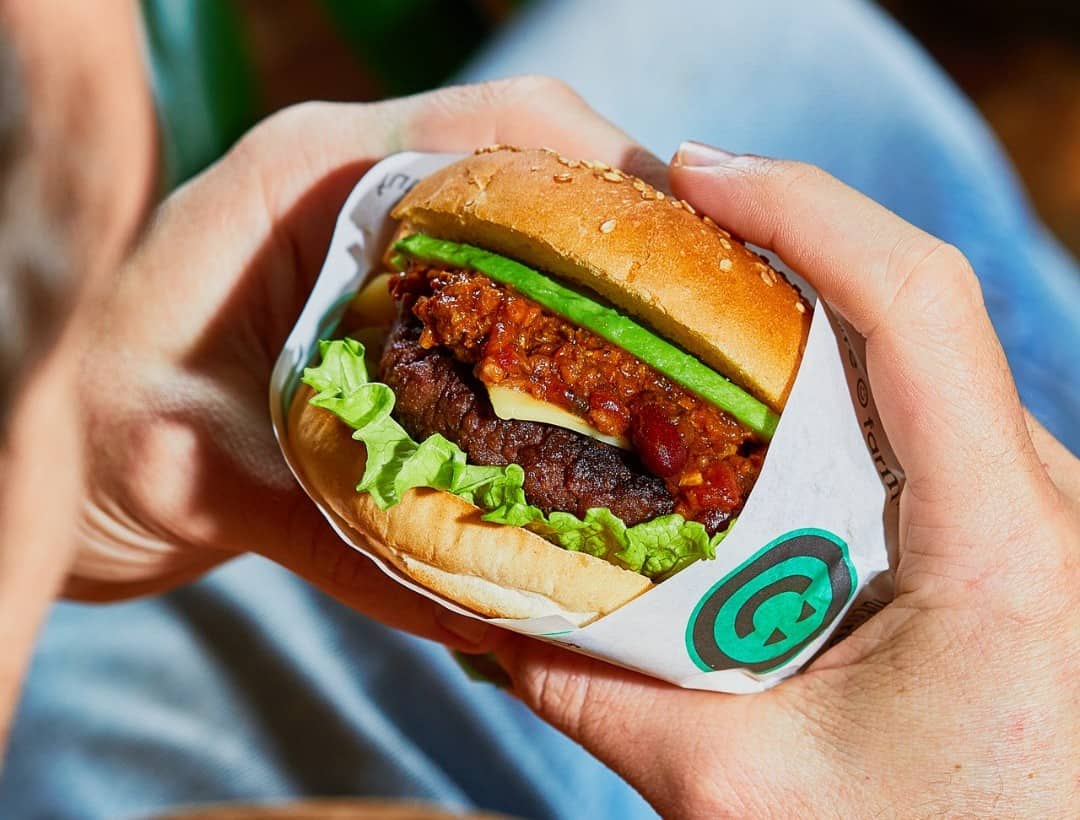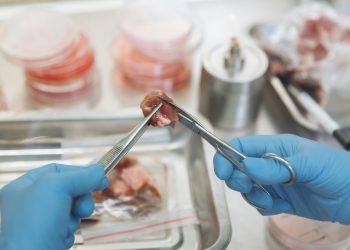British scientists have successfully grown fillet steak in a laboratory – and it could be available to buy as early as next year.
3D Bio-Tissues (3DBT), a spinoff from Newcastle University, produced three small prototype fillets, each weighing just 5g each.
According to the team, when pan-fried, the fillets seared easily and showed heavy caramelization, with aromas ‘identical to those of barbecued meat’.
Che Connon, Chief Executive of 3DBT, said: ‘We are extremely pleased with the results of our first prototype which has exceeded our expectations in terms of integrity, aroma, texture, and more.
‘We believe our prototypes to be some of the first fillets of cultivated meat in the world, representing a ground-breaking development for the industry.’


How are the steaks made?
To create the fillets, scientists take cells from living cows using painless biopsies.
These cells are placed into a bioreactor, where they are added to a chemical growth agent called ‘City-Mix’, which increases the number of cells.
Once the number of cells increases enough, the product begins to resemble a normal steak.
Today, 3DBT announced that it has produced three small meat fillets measuring approximately 1.18 inches (33mm) by 0.59 inches (15mm).
When raw, the lab-grown fillets look and feel just like real meat and have ‘no obvious aroma’, according to researchers.
But the real test came when the researchers attempted to cook two of the fillets.
Placing them into a hot pan, the team found that they cooked rapidly and only showed minimal shrinkage – as you would expect from high quality real meat.
They seared easily and showed heavy caramelisation, with charring on the surface.
And in terms of smell, the researchers describe the aromas as ‘identical to those of barbecued meat’.
While several other teams around the world are also developing their own lab-grown meats, many of these rely on plant-based scaffolds.
In contrast, 3DBT’s lab-grown fillets are some of the first to be made entirely of meat.
GEN Z ‘DISGUSTED’ BY LAB-GROWN MEAT
Almost three-in-four members of Australia’s Gen Z are ‘disgusted’ by the idea of lab-grown meat and said they would not eat it instead of animal products, a study found.
The survey of 227 Gen Z Australians found that as many as 72 percent have reservations about eating cultured meat over its animal-derived forebear.
Nevertheless, 41 percent of those polled also said that they saw synthetic meat as having the potential to be a viable nutritional source in the future.
‘Our prototypes are 100% animal meat, having native-like structures without the need for plant-based scaffold,’ Mr. Connon explained.
While the lab-grown fillets are not yet available to buy, 3DBT says there’s not long to wait.
The firms hopes to produce a larger-scale prototype in just six to eight weeks, before producing a full-scale fillet in early 2023.
‘The success of our prototypes puts us firmly on the path to producing our first showcase fillet of meat and we are hugely excited for the future,’ Mr. Connon concluded.
Scientists say the overall environmental impacts of cultured meat production are likely to be substantially lower than those of conventionally produced meat, despite no direct comparison is possible because cultivated products are not yet being produced on an industrial scale.
One study claimed that cultivated meat involves approximately 7–45 percent less energy use than conventionally produced European meat.
Greenhouse gas emissions were also found to be 78–96 percent lower, while land use was cut by 99 percent and water use by 82–96 percent.
However, getting people on board with lab-grown meat could prove difficult.

Almost three-in-four members of Australia’s Gen Z are ‘disgusted’ by the idea of lab-grown meat and said they would not eat it instead of animal products, a study found.
The survey of 227 Gen Z Australians found that as many as 72 percent have reservations about eating cultured meat over its animal-derived forebear.
Nevertheless, 41 percent of those polled also said that they saw synthetic meat as having the potential to be a viable nutritional source in the future.
Max Elder, former Research Director of the Food Futures Lab at Institute for the Future, said: ‘Images in popular media of cultured meat today look sterile, scientific, unappetizing; something to touch with a rubber glove or eat out of a petri dish.
‘We need images of cultured meat that appear familiar and delicious, otherwise, consumers will think the opposite before products even reach their plates.’










